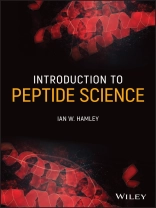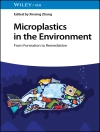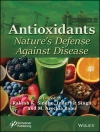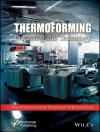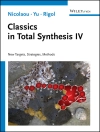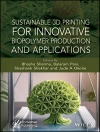Provides an interdisciplinary introduction to peptide science, covering their properties and synthesis, as well as many contemporary applications
Peptides are biomolecules comprised of amino acids which play an important role in modulating many physiological processes in our body. This book presents an interdisciplinary approach and general introduction to peptide science, covering contemporary topics including their applicability in therapeutics, peptide hormones, amyloid structures, self-assembled structures, hydrogels, and peptide conjugates including lipopeptides and polymer-peptide conjugates. In addition, it discusses basic properties and synthesis clearly and concisely.
Taking a logical approach to the subject, Introduction to Peptide Science gives readers the fundamental knowledge that is required to understand the cutting-edge material which comes later in the book. It offers readers in-depth chapter coverage of the basic properties of peptides; synthesis; amyloid and peptide aggregate structures; antimicrobial peptides and cell-penetrating peptides; and peptide therapeutics and peptide hormones.
* Introduces readers to peptide science, including synthesis and properties
* Provides unique content covering properties, synthesis, self-assembly, aggregation, and applications
* Summarizes contemporary topics in an accessible fashion including applications in therapeutics, peptide hormones, amyloid structures, self-assembled structures, hydrogels, and peptide conjugates including lipopeptides
* Presented at an introductory level for the benefit of students and researchers who are new to the subject
Introduction to Peptide Science is an ideal text for undergraduate students of chemistry, biochemistry, and other related biological subjects, and will be a valuable resource for postgraduate students and researchers involved in peptide science and its applications.
Jadual kandungan
Preface vii
1 Basic Properties 1
1.1 Introduction 1
1.2 Properties of Amino Acids 2
1.3 The Peptide Bond 22
1.4 Secondary Structures 24
1.5 Peptide Structure and Conformation Characterization Methods 32
1.6 Peptide Databases and Web Software 39
Bibliography 43
2 Synthesis 45
2.1 Introduction 45
2.2 Solid-Phase Peptide Synthesis 46
2.3 Solution-Phase Peptide Synthesis 58
2.4 Methods to Prepare Longer Peptides 59
2.5 Peptide Library Synthesis 62
2.6 Synthesis of Cyclic Peptides 65
2.7 Peptidomimetics 69
2.8 Post-Translational Modifications 70
2.9 Lipidation 71
2.10 Glycosylation 73
2.11 Polypeptide Polymers and Conjugates of Peptides and Polymers 74
2.12 Non-Ribosomal Peptide Synthesis 80
2.13 Purification and Analysis Methods 80
Bibliography 84
3 Amyloid and Other Peptide Aggregate Structures 87
3.1 Introduction 87
3.2 Amyloid 90
3.3 Amyloid beta 93
3.4 Mechanisms and Kinetics of Amyloid Aggregation 100
3.5 Toxicity and Relevance to Disease 105
3.6 Fibrillization of Small Peptides 108
3.7 Biological Functional Amyloid and Bioengineering Applications of Amyloid Materials 110
3.8 Fibrils From alpha-Helices 111
3.9 Peptide Hydrogels and Tissue Scaffolds 112
3.10 Peptide Nanotubes 116
3.11 Peptide and Peptide Conjugate Assemblies 119
3.12 Characterization Methods for Peptide Assemblies 124
Bibliography 130
4 Antimicrobial and Cell-penetrating Peptides 133
4.1 Introduction 133
4.2 Bacterial Pathogens, Targets of Antibacterial Agents, and Antimicrobial Resistance Pathways 134
4.3 Testing Antimicrobial Activity 139
4.4 Bacterial Biofilms 140
4.5 Design of Antimicrobial Peptides 144
4.6 Classes of Antibacterial Peptides 146
4.7 Antifungal Peptides 155
4.8 Antiviral Peptides 159
4.9 Antiparasitic Peptides 160
4.10 Mechanisms of Activity 160
4.11 Cell-Penetrating Peptides 164
Bibliography 167
5 Peptide Hormones and Peptide Therapeutics 169
5.1 Introduction 169
5.2 General Principles of Peptide Therapeutics 170
5.3 Peptide Hormones 176
5.4 Neuropeptides and other Peptides In vivo 202
5.5 Venom-Derived Peptides 204
5.6 Anticancer Peptides 207
5.7 Miscellaneous Peptide Therapeutics 212
5.8 Cosmetic Peptides and Lipopeptides 214
Bibliography 216
Index 219
Mengenai Pengarang
IAN W. HAMLEY, PHD, is Diamond Professor of Physical Chemistry at the University of Reading, UK, where he has been working for the past fifteen years on peptide systems, and has published several books and more than 400 papers, including several key reviews on topics including amyloid, peptide nanotubes, polymer-peptide conjugates, short bioactive peptides, and peptide hormones.
